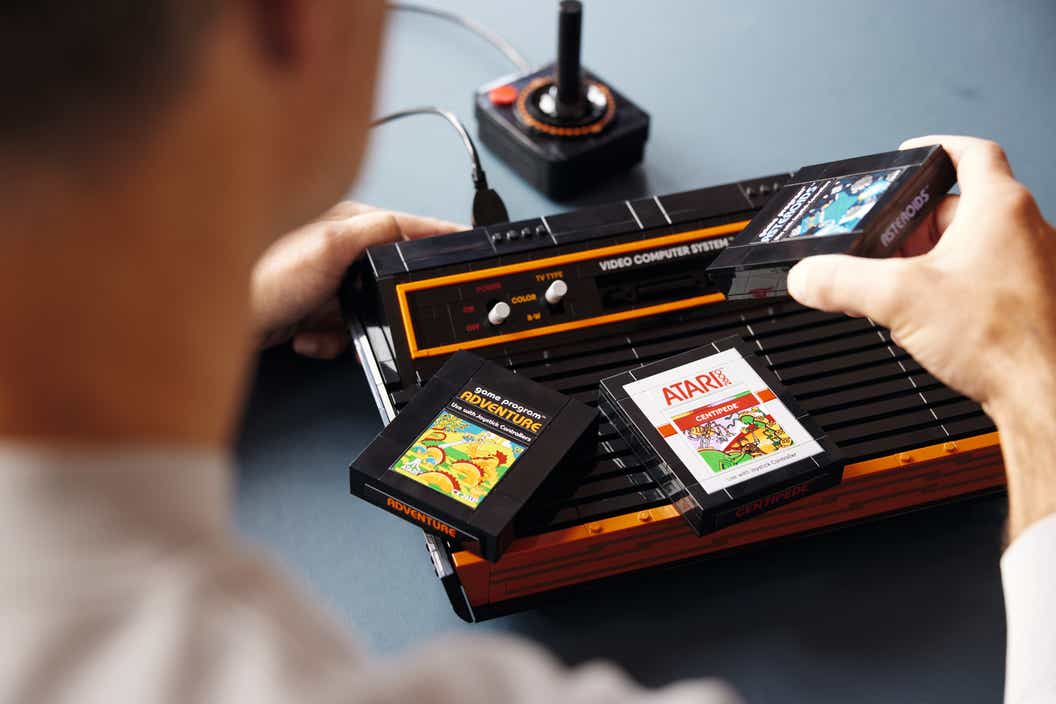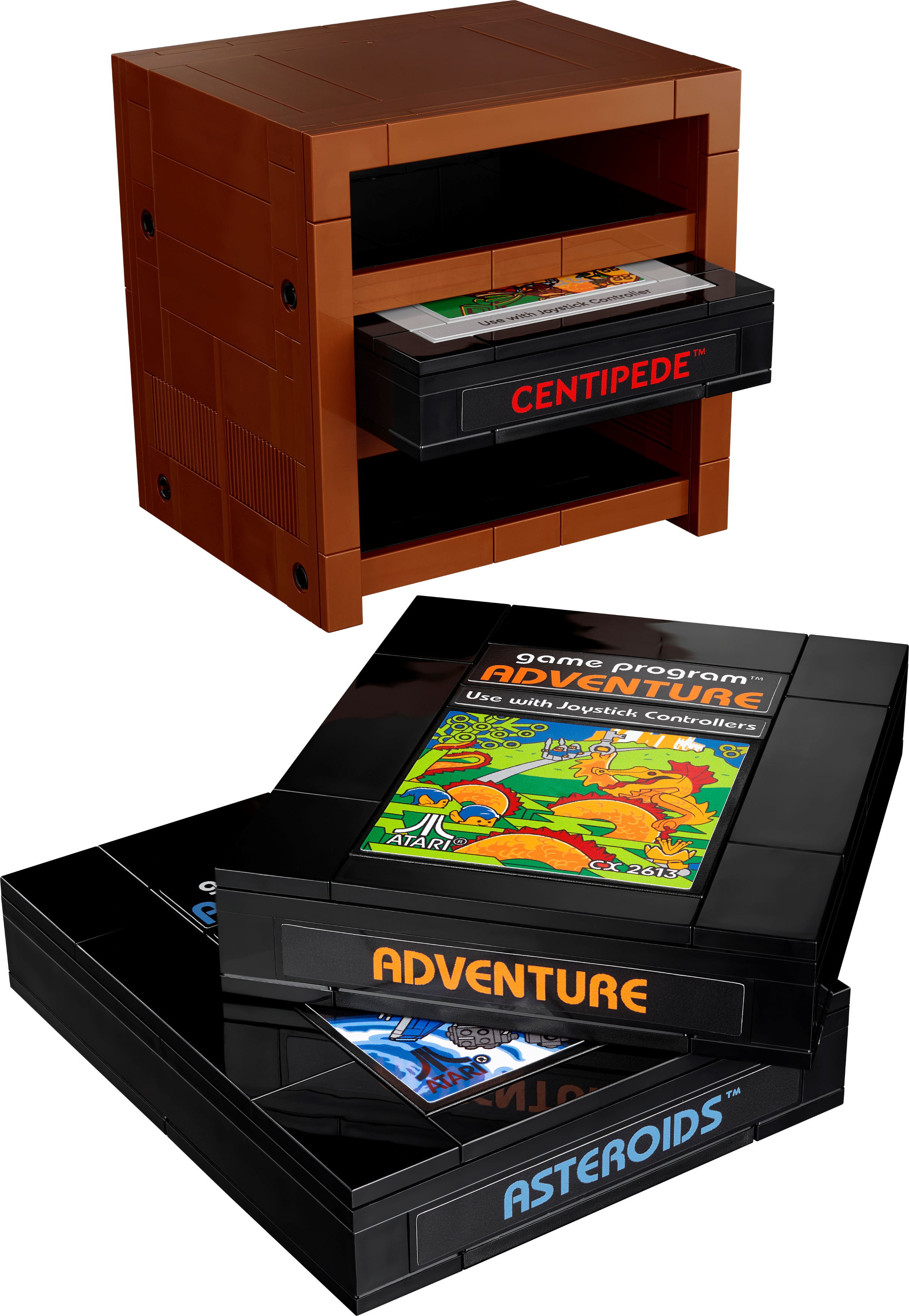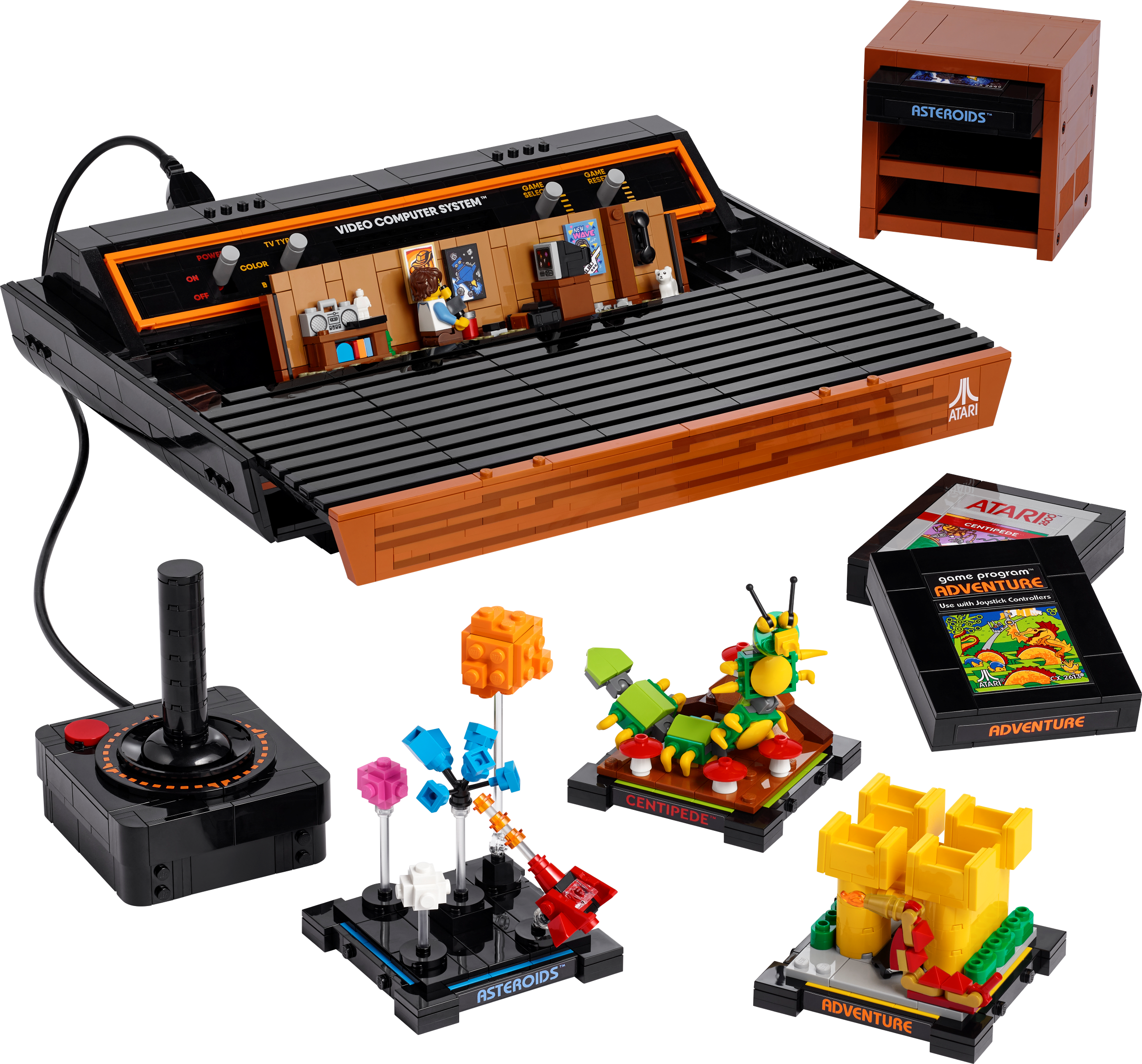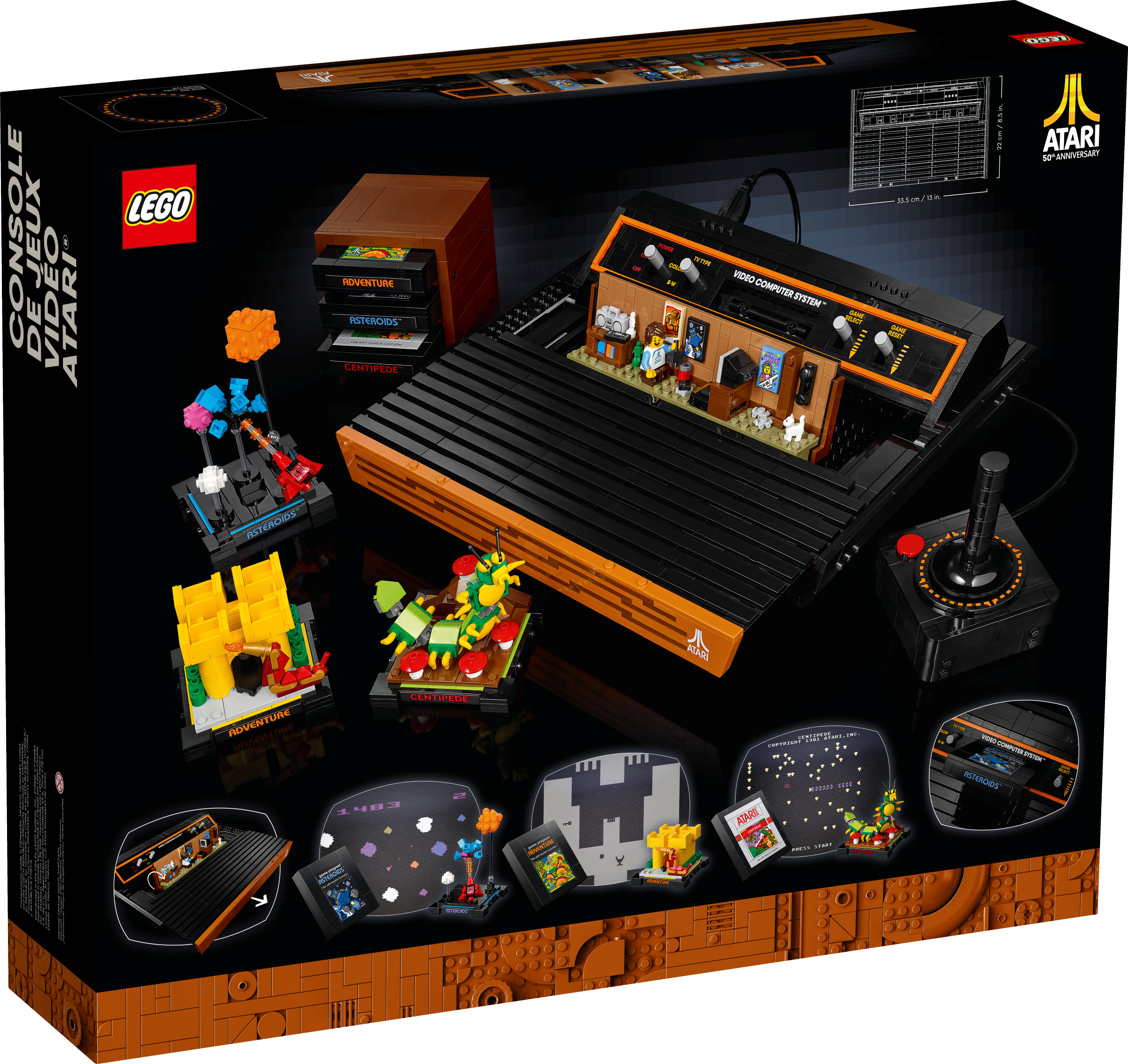The Lego Group’s latest foray into the world of sets aimed at those hurtling towards their middle age at alarming speed is set 10306, the Atari 2600. This is exactly what you think it is – an almost but not quite real-life scale model of one of the most significant consoles in gaming history, dating all the way back to 1982. Truth be told, the 2600 is quite a bit before my time (my first console was a Mega Drive), but I’m nevertheless definitely squarely in this set’s target audience: a video game nerd who also loves and collects complex-scale Lego, with an appreciation for the artistry of the older video game consoles. I mean, the machine has a wood grain finish, for goodness sake. You just don’t get that any more. As a building project, Lego’s 2600 is a splendid little experience. Weighing in at $239.99 / £209.99 for 2532 pieces, it’s a large set, and the sort of project that’ll take you a little while to get through. I do think the price is on the expensive side for what the core of the set is - but I’ll come back to that in a moment. First off, though, what about the bulk of the set? The 2600 console itself is amazing, as is the clever brick-built joystick controller. There’s some neat building techniques used throughout, and a great combination of orange and brown bricks helps to create the iconic wood grain on the front of the console. Logos and iconography on the console are handled entirely with prints – no stickers in sight on the console itself. This is a major win. There’s lovely, clicky switches for things like the game select and on/off switches, which makes the finished model feel a little tactile. Like the Lego Nintendo Entertainment System, the Atari can also take brick-built game cartridges, which slot in just as with the real thing. This is a model first and foremost, but there’s a playable element to it I appreciate. Hidden just under the hood of the 2600’s body is a cute little easter egg. Pull the main body of the machine towards you and up flips a tiny 1980s diorama – a period-appropriate living room. There’s a wired telephone, a 2600 and CRT TV running Asteroids, a poster referencing Indiana Jones via long-retired classic Lego line Adventurers, a VHS tape, boom box, and a Lego minifigure who lives there. It’s a cute addition, and drives home the point of the set: hardcore 80s nostalgia. It’s great. My slight reservations about price are unrelated to the main console, but more to the extras. In addition to the console and joystick, the Lego Atari set includes three game cartridges and a mini shelf to store them in. In addition, each cartridge builds out to a diorama for each game – so the Asteroids cart can feature a separate build of a spaceship and exploding space rocks, for instance. The cartridge art is accomplished via stickers, as on the NES. These side builds actually feel a little superfluous, and this is where the set loses me just a touch. Inside baseball for a moment here – the way Lego sets are designed is the concept gets signed off first, before a design, and that includes a price bracket. In honesty, that feels like it’s the culprit here: the designer was given a budget and final retail price for the Atari 2600, but after building out the console and controller design came in under budget. So dioramas and cartridge cases get added to buff out the cost to match up to the planned retail price – but these elements ultimately feel tacked-on. With the Lego NES, the large CRT TV that came with it made sense as part of the set and felt like a rewarding build and display piece in itself – less so with these cartridges and especially so with the cart storage tower - which is based off a real Atari product but also feels completely superfluous. With that said, it’s difficult to argue too much against the value of this set. Once built, it’s an impressive, nostalgia-stoking build – and the sort of thing you’d be proud to have displayed. That’s adult Lego at its best – an engaging, brain-teasing build, and a model worth displaying at the end. At this, the Atari 2600 is perfectly adequate. It joins the NES as a lovely display piece for retro gamers. With Nintendo and Atari done, there’s only one thing for it – it’s time for a Sega console. And then a PS1. Are you listening, Lego?



